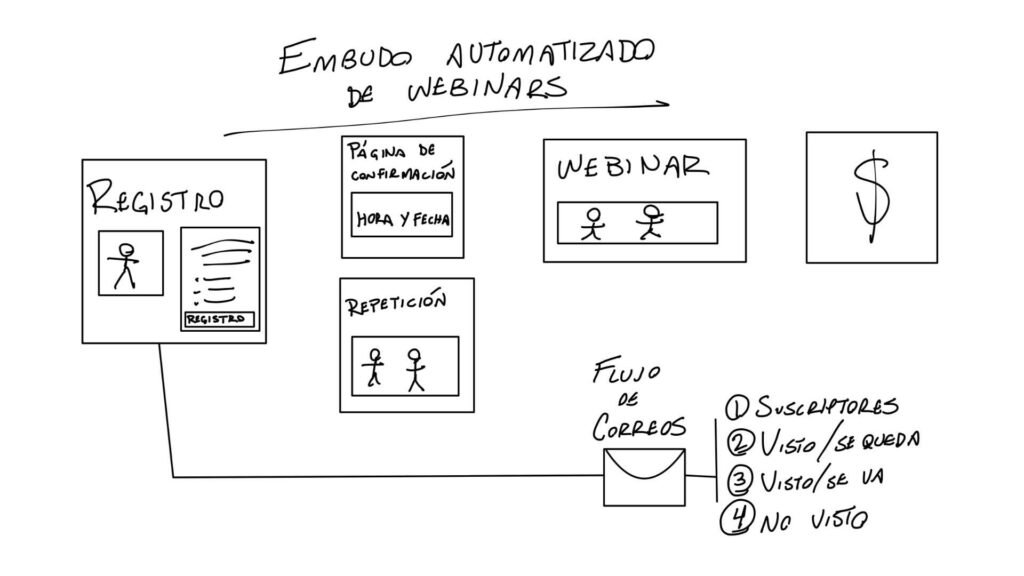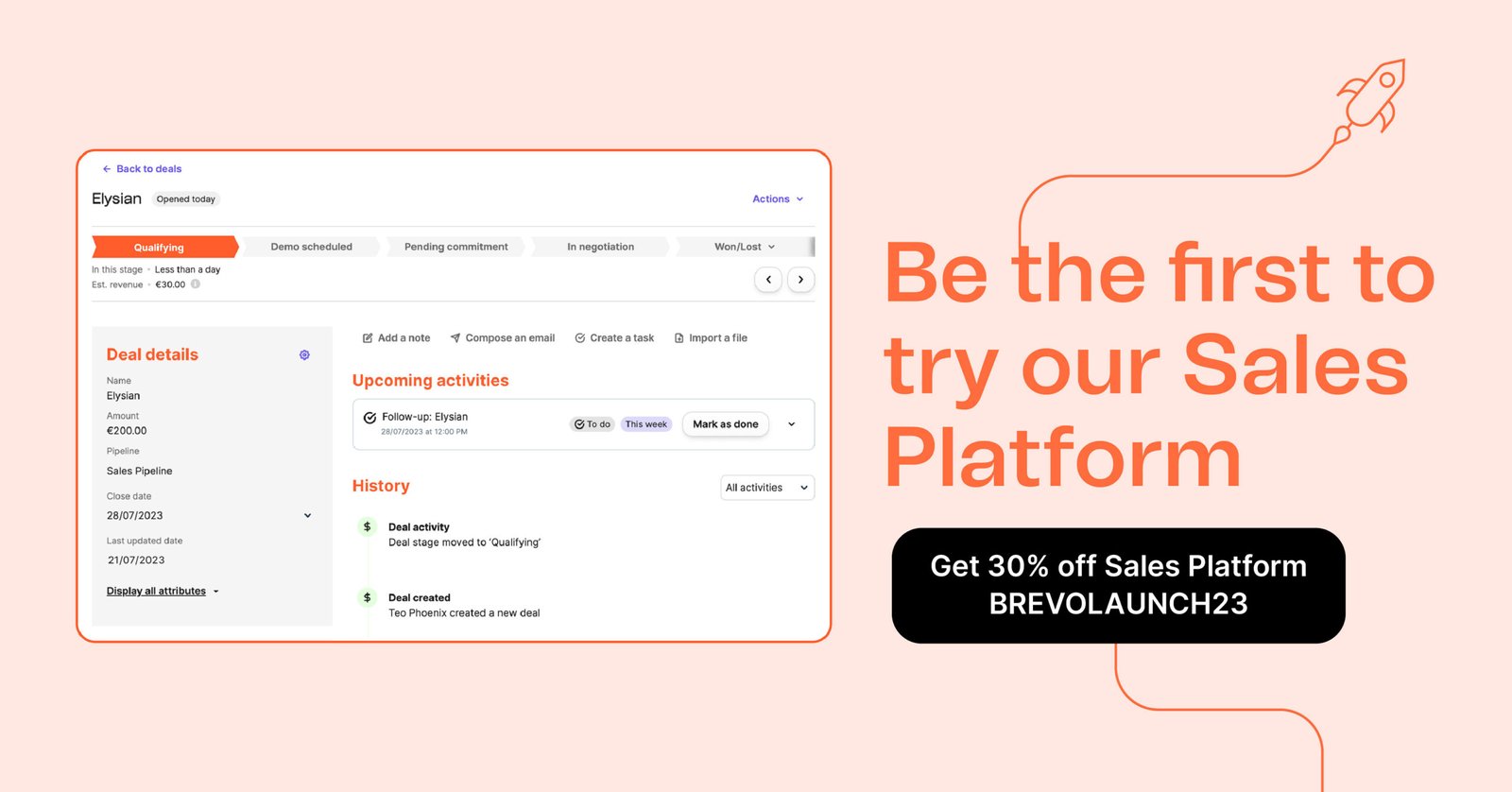The perfect webinar funnel is ideal for customers who are in the middle of the value ladder. At this stage, they're already considering buying your product or signing up for your training (or whatever you're offering). It's crucial that the webinar content is not only valuable in itself, but also strategically designed to prepare for the sale, as you'll see in the perfect webinar script.
Sales Webinar Funnel
The process begins by driving traffic to a registration page, where a sales script or compelling video motivates visitors to sign up for the webinar. Russell Brunson, for example, often uses the "Who, What, Why, How to"on the registration pages of your webinars. After watching the video or reading the information, interested prospects enter their name and email to register. Boom! Now they're on your list.
Automated Webinar Funnel

Russell Brunson typically does a one-time live webinar, and then takes the recording of that event to build an automated webinar funnel. This allows him to keep sending traffic to that page every day, ensuring that the funnel continues to run indefinitely.
The process begins by driving traffic to a registration page that uses the script "Who, What, Why, How". People enter their names and emails to register and are then directed to a confirmation page where they are provided with the date and time of the event, or the option to watch a "previous day's" replay immediately.
Russell's team keeps detailed track of when a participant leaves the webinar, and then sends a customized email sequence based on how long they have watched the event. Those who register receive one sequence, those who attend and stay until the end receive another, those who attend but leave early receive a different one, and those who don't attend receive a completely different sequence, encouraging them to watch the replay. Each sequence is designed to encourage participants to complete the webinar or place an order for the product we are selling. Once a participant places an order, the email sequences stop automatically.
You can generate these automated email sequences for free.
The Perfect Webinar Script

A typical webinar is divided into three sections: the introduction, the content and the closing (or sales pitch).
Introduction:
This section should last about five minutes. Here you introduce yourself, introduce the topic and establish your credibility.
Great Promise: Repeat the big promise that got participants to sign up in the first place. This will be the measure by which they will evaluate the quality of your webinar. If you don't establish this metric, they may judge the value of your webinar based on criteria outside of your control.
"In the next sixty minutes, you will learn my exact strategy on 'how to __________, without __________'."
Final Hook: Offer a reason for participants to stay until the end of the webinar. Free gifts are very effective, but you could also promise something fun or reveal something interesting.
"Don't forget! At the end of the webinar, I'll give you a secret link where you can download a full transcript of what I'll show you today. You have to be present live to get it, so stick around. I promise it will be worth it."
Attention Capture: Ask participants to close Facebook, turn off their phones and give you their full attention. You can even suggest that they have a pen and paper handy to take notes.
"I know there are distractions all around us, but the strategy I'm about to share can change your life. I don't want you to miss a single crucial step. So please... commit to staying focused. Can you do that for yourself? Close Facebook, stop checking your email, turn off your cell phone. Give me your full attention."
Qualification: Explain why you are qualified to speak on the topic.
"You're probably wondering why I'm qualified to teach you this. Here's my story: _____________."
Future Projection: Guide viewers to imagine what their life would be like after learning the secrets you are about to reveal. Be descriptive and use all five senses if possible.
"Imagine what your life will be like after you know how __________ Can you see it? Would it make things better for you?"
Content:
This is the core part of the webinar, where you deliver the content you promised in the registration script. It should last between fifty and sixty minutes. Russell mentions that he likes to focus on one main idea and then break it down into three secrets.
The Only Thing: This is the essence of your webinar, the reason why the participants signed up. Each point should point to this main idea.
"How to add high revenue sales to your sales funnel instantly, without you having to personally talk to anyone on the phone...ever!"
Secret #1:
Phrase: "The best model for making money online is to sell high-value products."
Reconstruction: "You can make more money in a day selling high-priced products than you can in a month selling regular products."
Secret #2:
Phrase: "To sell high-priced products, I have to sell over the phone."
Reconstruction: "You don't have to sell anything personally! (Big plus because I hate phones!) Let me show you how to build a mini call center for two people to close all sales for you."
Secret #3:
Phrase: "It probably costs a fortune to drive enough traffic to make this work."
Rebuild: "You only need a little bit of traffic to make this work (about 100 clicks a day)."
Remember that teaching these three secrets should take fifty to sixty minutes. Use this opportunity to tell stories, show examples and connect your audience with the engaging character.
Stacking (Closing):
This section should last at least ten minutes. As you get closer to closing, people can get nervous. Russell Brunson suggests the following:
Transition: Ask a direct question to start the transition into your sales pitch, focusing on how your product will help participants achieve "The only thing" who have come to learn.
Stacking: Here, you present the offer using the technique of the "stacking". Start with the first bullet, explain it, then present the second bullet and restack the offer, and so on.
"So what that means is that you're going to get __________ first, and also __________."
As you go along, keep adding components to the offer, recap everything and then reveal the price.
Price anchoring: Show the total value of everything the buyers will receive. Although the price you mention first will not be the final price, it is important to anchor that value in their minds. Use the words "If everything" to anchor the offer and help the buyer justify the price you have given. Use both "toward pleasure" and "away from pain" statements.
"If all this gave you the house of your dreams, would it be worth it?" (towards pleasure).
"If all this allowed you to fire your boss, would it be worth it?" (away from pain).
Reveals the Actual Price: Finally, it reveals the actual price, which should be much lower than the initial price.
"I'm not going to charge you ___________. I'm only going to charge you ___________."
Remember, you can create these types of funnels using ClickFunnels, Russell Brunson's tool.
If you already have a website created with WordPress, you can also use Cartflows.
Or when you sign up for our hosting + mkt service, we include Cartflows in your plan along with other tools that will help you implement your marketing strategies effectively and create funnels as powerful as ClickFunnels.







